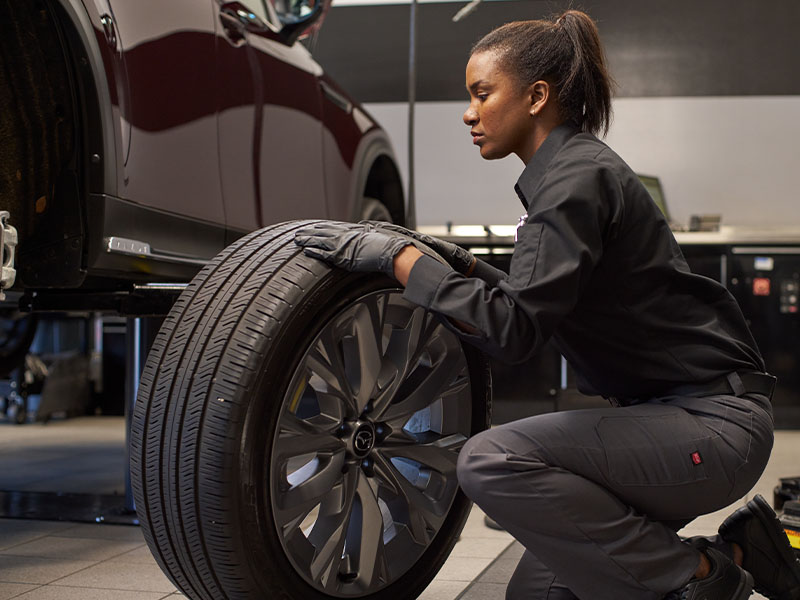Tire Maintenance & Repair Services
At Daytona Mazda Service Center in Daytona Beach, Florida
Comprehensive Tire Maintenance Services
Why Choose Our Tire Services?
Expert Technicians:
Our technicians are Genuine Mazda certified and possess extensive expertise in handling various tire types and brands.
Quality Tires:
We offer a diverse range of top-notch tires from renowned brands, all approved by Ford for optimal performance and safety.
Competitive Pricing:
Enjoy competitive prices on all our tire services and products, ensuring exceptional value for your investment.
Convenient Scheduling:
Our user-friendly online scheduling system makes booking your tire service quick and hassle-free.

Perfection In Every Detail
Mazda Full Circle Inspection
else, and we're meticulous about its care. So rely only on Mazda for a Full Circle Inspection
and report card, Genuine Mazda Parts, and the most convenient service experience possible.
Frequently Asked Questions
How Can I Verify if My Tire Alignment is Done Correctly?
To verify if your tire alignment is correct, find a straight, flat road with minimal traffic. While driving, gradually lift your hands off the steering wheel. If your vehicle maintains a straight path, the alignment is likely correct. However, if the car drifts to the left or right, it indicates that the alignment might need to be adjusted. It’s a good idea to repeat this test a few times to ensure consistent results.
What Should I Check While Driving to Assess Alignment?
Can I Check Alignment at Home?
Why Does My Car Still Pull After Alignment?
There are several reasons why your car might still pull after an alignment:
- Incorrect Alignment: The alignment might not have been done correctly. It’s essential to have it double-checked by a trusted mechanic.
- Other Factors: Issues such as tire wear, suspension problems, or uneven road surfaces can also cause your vehicle to pull to one side. Ensuring these components are in good condition can help maintain proper alignment.
How Often Should I Get an Alignment?
What’s the Impact of Bad Alignment?
Poor alignment can lead to several issues:
- Poor Handling: Your vehicle may become difficult to control, affecting safety.
- Tire Wear: Misalignment causes uneven tire tread wear, reducing tire lifespan and safety. Regular alignments ensure better handling and extend tire life, saving you money in the long run.
What’s a Wheel Alignment Report?
What Causes Alignment Issues?
Several factors can cause alignment issues:
- Potholes and Bumps: Hitting potholes or bumps can knock wheels out of alignment.
- Worn Suspension Components: Damaged shocks or struts can affect alignment.
- Regular Wear: Over time, normal driving can gradually shift alignment. Regular maintenance and avoiding road hazards can help maintain proper alignment.
Can I Drive with Bad Alignment?
How Do I Read a Wheel Alignment Report?
Does Your Mazda Have A Safety Recall?
Mazda Recall Information Center
If your vehicle is affected by a recall, please schedule an appointment to have your vehicle repaired by an authorized Mazda dealer as soon as possible. Your safety is very important to Mazda and it is our mission to actively communicate all recall information to our customers.
Click the link below to check if your vehicle has an active recall or Special Service Program (SSP).
